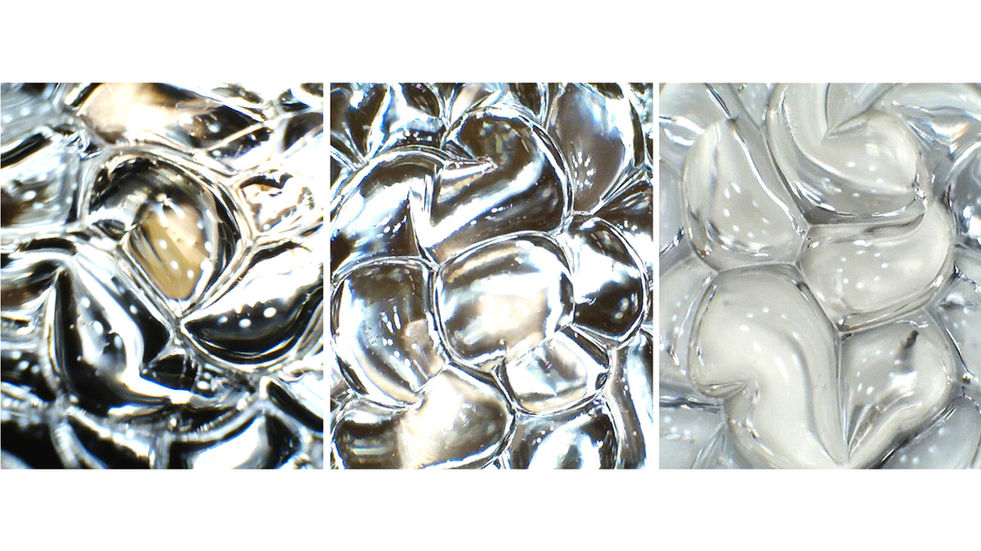

systems
main question
The environmentally responsive polymeric membranes regenerate (release water), insulate, and diffuse natural daylighting during the day, while adsorbing humidity and actuating ventilation at night, a combination of strategies appropriate for a hot-humid climate.
The Dynamic Regenerative Integrated Polymeric Skins (DRIPS) system provides a fluctuating building envelope that functionally embeds a material logic that responds passively to diurnal environmental conditions.
How can we viably capture humidity from the air for potable water?

Image: Hydrogel-based building-envelope integrated membrane concept
gallery:

gallery:
team
collaborators
selected
publications
sponsors
NYSERDA, NYSTAR
Anna Dyson, Aletheia Ida, Jason Vollen, Peter Stark, Rahmi Ozisik, Ryan Gilbert, Marcel Perez-Pirio.
Growth Media Design (2021)
Phoebe Mankiewicz, Aleca Borsuk, Christina Ciardullo, Elizabeth Hénaff + Anna Dyson (In preparation 2021)
Industry: Skidmore, Owings & Merrill LLP (SOM)
Academic/National Labs: CEFPAC, Rensselaer Polytechnic Institute (RPI)
How can we viably capture humidity from the air for potable water?


Renewable bio-based circular material economies in timber, post-agricultural by-products and plant-based bioremediation
Add a Title
DRIPS
DYNAMIC
REGENERATIVE
INTEGRATED
POLYMERIC
SKINS
Anna Dyson, Aletheia Ida, Jason Vollen, Peter Stark, Rahmi Ozisik, Ryan Gilbert, Marcel Perez-Pirio.
Industry: Skidmore, Owings & Merrill LLP (SOM)
Academic/National Labs: CEFPAC, Rensselaer Polytechnic Institute (RPI)
The environmentally responsive polymeric membranes regenerate (release water), insulate, and diffuse natural daylighting during the day, while adsorbing humidity and actuating ventilation at night, a combination of strategies appropriate for a hot-humid climate.
The Dynamic Regenerative Integrated Polymeric Skins (DRIPS) system provides a fluctuating building envelope that functionally embeds a material logic that responds passively to diurnal environmental conditions.























